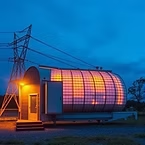How it works?

Excess Energy Storage
Converts surplus electricity into thermal energy for storage, optimizing energy use during peak production.

Heat Capture
Harnesses excess heat from sources such as industrial processes, solar power, or waste heat.

Heat Release
Delivers stored energy as consistent heat or electricity when needed, ensuring continuous power supply and flexibility.
